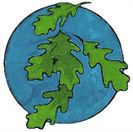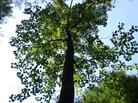In addition to Noxious weeds, some plants have been
designated as invasive.
Select to jump to a
state's invasive species list:


-Color denotes a tree that is rare or endangered
Want to add your tree to our picture gallery? Click here for details!

Invasive Tree Species




™

Custom Search
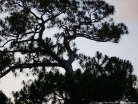
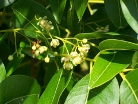
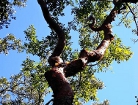
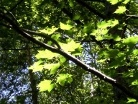
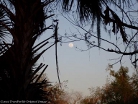
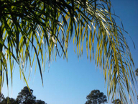
Tree lists:
•A-Z by scientific
name
•A-Z by common
name
•By Family
For state A-Z list click state name below.
•A-Z by scientific
name
•A-Z by common
name
•By Family
For state A-Z list click state name below.

Nebraska Invasive Tree Species
Category 2: Priority Invasive Plants
Defined as plants for which eradication is still possible.
Amur Maple- Acer ginnala Found in 3 eastern counties (2012)
European Alder-buckthorn- Frangula alnus Found in 1 county (2012)
Category 3: Established Invasive Plants
Defined as species established well enough that eradication is not likely. Listed species need to be controlled and contained when
possible to prevent further spreading.
Tree of Heaven- Ailanthus altissima
Russian Olive- Elaeagnus angustifolia
Autumn Olive- Elaeagnus umbellate
Osage Orange- Maclura pomifera
White Mulberry- Morus alba
Black Locust- Robinia pseudoacacia
Siberian Elm- Ulmus pumila
As defined by the Invasive Species Advisory Council, an invasive species is a non-native species
whose introduction does or is likely to cause economic or environmental harm or harm to human, animal
or plant health.
Non-native doesn't always mean from outside North America. It could be that a certain type of oak
tree from California is going nuts in Florida throwing acorns everywhere, sprouting anywhere you look,
and doing just as well as, if not better than, the native species in the area. This too is an invasive
species. Think of invasive species more as a non-natives of the local ecosystem.
How bad is the problem?
The short answer is bad. There are over 380 invasive plant species in the southeastern United States
alone. Among the non-tree species, an aggressive vine called Kudzou, is spreading fast and causing
major damage to the forests. Invasive species aren't limited to plants. There are insects, animals and
invertebrates as well. One of the most noteworthy tragedies due to an invasive insect was loss of the
American Chestnut tree, which was almost entirely wiped out. You can read more about that and
reasons to stick with native species here. Sadly, this issue isn't limited to the southeastern United
States, or even the United States, this is a global problem and is changing forests and ecosystems
world wide.
How did this happen?
Invasive species arrived several different ways. Some were brought in for landscaping purposes and
have escaped into the wild. Others were brought unintentionally in contaminated seeds, in packing
materials, with livestock and in soils with other imported potted plants.
What are some common characteristics of invasive species?
Aggressive reproduction, rapid growth rate, mature early, adaptive, tolerant to changes and
disturbances, and having no natural enemies are a few characteristics most invasive species share.
Please note- these state lists include both state declared invasive species and species which are
declared invasive elsewhere but present in one or more counties within the state.
Sources:
EDDMapS. 2013. Early Detection & Distribution Mapping System. The University of Georgia - Center for Invasive Species and Ecosystem
Health. Available online at http://www.eddmaps.org/; last accessed January 17, 2013.
Invasive Species Advisory Council 2006, www.invasivespeciesinfo.gov, invasivespecies1.pdf
USDA PLANTS Database
What is an invasive species?
A little about Invasive species...



- Trees
- A-Z scientific
- A-Z by Common Name
- Families
- Aceraceae Maple Family
- Anacardiaceae Sumac Family
- Annonaceae Custard Apple Family
- Aquifoliaceae Holly Family
- Arecaceae, Palm Family
- Betulaceae Birch family
- Bignoniaceae Trumpet Creeper Family
- Burseraceae Frankincense Family
- Caprifoliaceae Honeysuckle Family
- Chrysobalanaceae Coco-plum Family
- Cornaceae Dogwood Family
- Cupressaceae Cypress Family
- Cyrillaceae Cyrilla Family
- Ebenaceae Ebony Family
- Ericaceae Heath Family
- Fabaceae Pea Family
- Fagaceae Beech Family
- Hamamelidaceae Witch Hazel Ffamily
- Hippocastanaceae Horse Chestnut Family
- Juglandaceae Walnut Family
- Lauraceae Laurel Family
- Leitneriaceae Corkwood Family
- Magnoliaceae Magnolia Family
- Meliaceae Mahogany Family
- Moraceae Mulberry Family
- Myricaceae Bayberry Family
- Myrsinaceae Myrsine Family
- Myrtaceae Myrtle Family
- Nyctaginaceae Four Oclock Family
- Olacaceae Olax Family
- Oleaceae Olive Family
- Pinaceae Pine Family
- Platanaceae Plane Tree Family
- Polygonaceae Buckwheat Family
- Rhamnaceae Buckthorn Family
- Rosaceae Rose Family
- Rubiaceae Madder Family
- Rutaceae Rue Family
- Salicaceae Willow Family
- Sapindaceae Soapberry Family
- Sapotaceae Sapodilla Family
- Simaroubaceae Quassia Family
- Styracaceae Storax Family
- Symplocaceae Sweetleaf Family
- Theaceae Tea Family
- Tiliaceae Lindon Family
- Ulmaceae Elm Family
- Taxaceae Yew Family
- Yucca Family
- Browse by State
- Rare or Endangered Species
- Trees_with_Special_Uses
- Tallest and Biggest
- Noxious Weeds
- Causes
- About Us
- Our Stores



